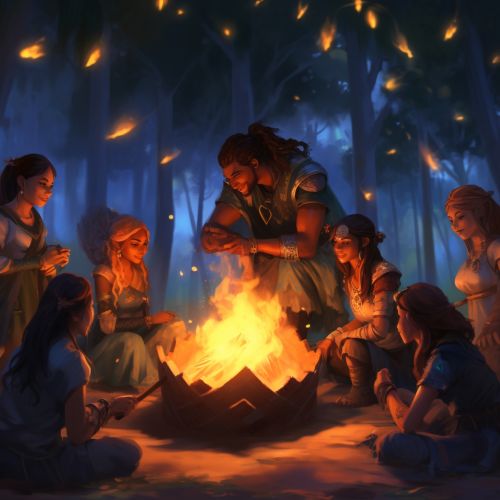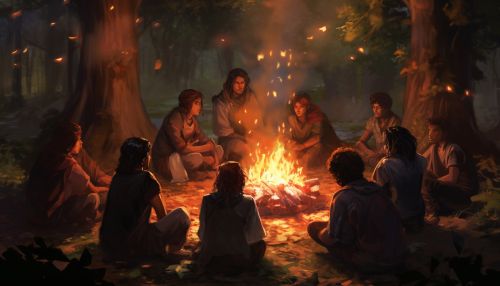Oral Tradition
Introduction
Oral tradition, also known as oral lore, is a form of human communication wherein knowledge, art, ideas and cultural material is received, preserved and transmitted orally from one generation to another. The transmission is through speech or song and may include folktales, ballads, chants, prose or verses. In this way, it is possible to trace back oral tradition thousands of years before human societies developed writing.


Importance of Oral Tradition
Oral tradition is important for several reasons. It fosters a sense of community, as stories, histories, and knowledge are shared among a group. It also allows for the transmission of cultural and societal norms and values. Oral tradition can also serve as an educational tool, as the stories and narratives can teach important lessons and values. In many cultures, oral tradition is a significant method of instilling social norms and values.
Types of Oral Tradition
Oral tradition can be classified into various types, including:
Myths and Legends
Myths and legends are traditional stories or narratives that have been passed down through generations. They often involve gods, heroes, and various supernatural beings. Myths and legends are often used to explain natural phenomena, customs, traditions, and historical events.
Folktales
Folktales are stories passed down through generations, mainly by word of mouth. They include fairy tales, tall tales, trickster tales, and other types of stories. Folktales often involve animals, mythical creatures, or inanimate objects as characters.
Proverbs and Sayings
Proverbs and sayings are short, traditional sayings that express a truth based on common sense or cultural experience. They are often metaphorical and use formulaic language.
Ballads and Songs
Ballads and songs are a form of narrative verse that can be either sung or recited. They often tell a story and may be of a romantic or dramatic nature. Ballads and songs are a popular form of oral tradition, as they are easy to memorize and pass down through generations.
Oral Tradition in Various Cultures
Oral tradition varies greatly among cultures in both the way it is disseminated and the content of the stories.
African Oral Tradition
In many African cultures, oral tradition serves as the primary means of teaching cultural values and history. Storytelling, proverbs, folktales, songs and chants are all part of the oral tradition in many African cultures.
Native American Oral Tradition
Native American cultures also have a rich oral tradition. Storytelling is a popular form of oral tradition, with stories often being used to teach moral lessons and convey cultural history.
Asian Oral Tradition
In many Asian cultures, oral tradition is used to preserve cultural history and teach moral values. This can be seen in the use of folktales, proverbs, and songs.
Challenges and Preservation
Oral tradition faces several challenges in the modern world. With the advent of written and digital media, oral tradition is at risk of being lost. However, efforts are being made to preserve oral tradition. This includes the recording and transcription of oral narratives, as well as the promotion of storytelling as a means of keeping oral tradition alive.
Conclusion
Oral tradition is a vital aspect of human culture, serving as a means of preserving history, culture, and societal values. Despite the challenges it faces in the modern world, efforts are being made to keep this important form of communication alive.
